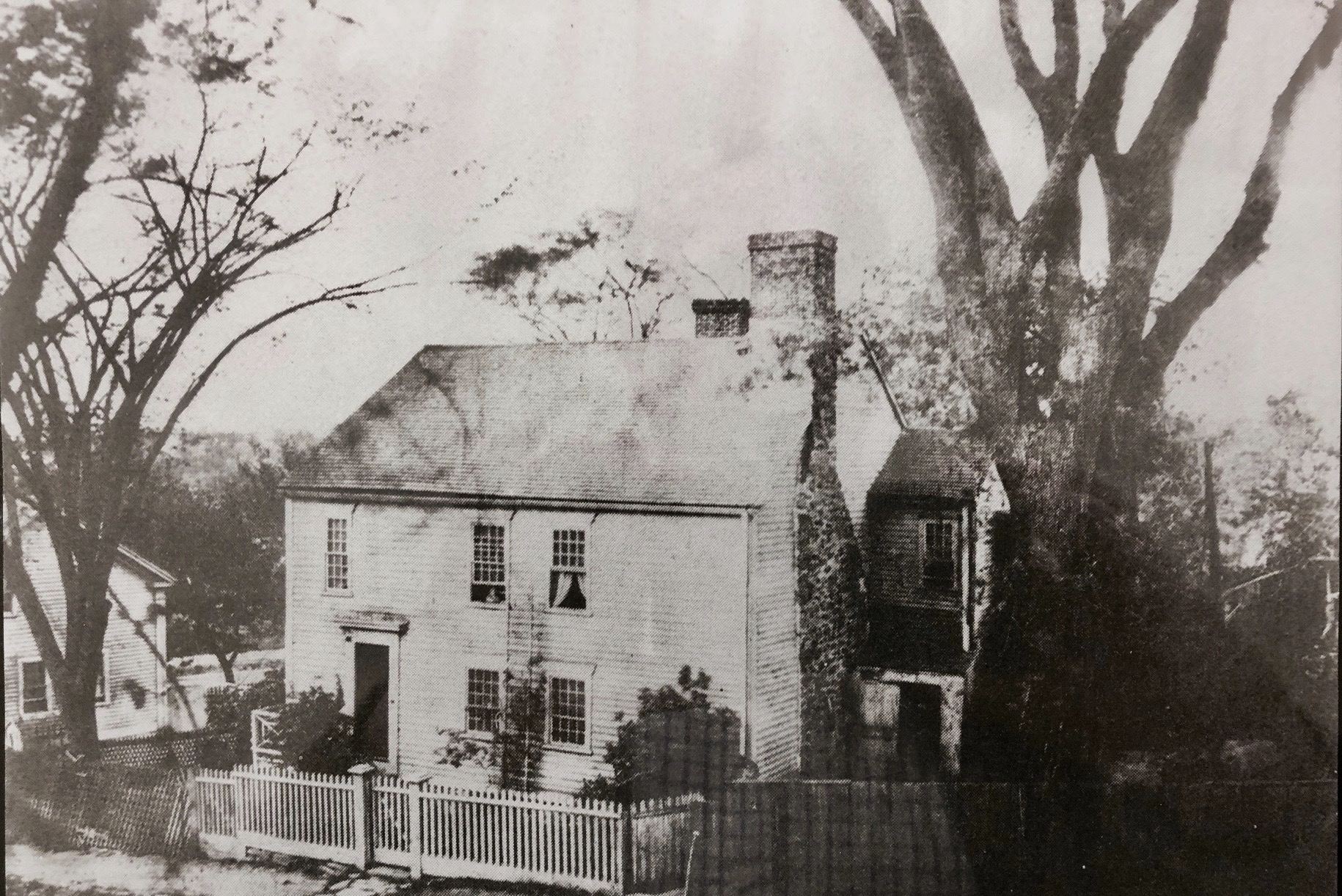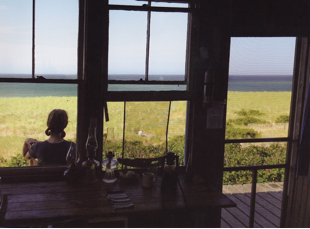
William Morgan: From the inspirational Williams to a deadening waiting room
Amidst bathos and banality while you wait…and wait.
— Photo by William Morgan
There are not many grimmer places than the contemporary medical office waiting room. And, as we get older, it seems we have to devote more of our lives to wasting time in such dreary, soul-deadening spaces. Carpets with busy patterns (to hide the dirt?), low ceilings with acoustical tiles, furniture (invariably in pale shades of rose or violet, sometimes stained), and dog-eared copies (several months old) of Sports Illustrated. The coup de grâce is often a television, too loud and tuned to medical info-mercials or a talk show with miserable human specimens who are in much worse shape than whatever it was that is sent us to the doctor.
We entered this particular foretaste of purgatory not to be healed, but to make an appointment. Feeling my life ebbing away, especially after the practice's telephone service informed me that I was Number 17 in the queue, my wife and I drove to the awful faux-concrete (yes, that plastic stucco-looking surface that looks nibbled at the edges) medical building on North Main Street in Providence. This is one of those rental office spaces that has been fixed up and repainted so many times, you can only pray that the mold and rodent droppings have been sealed in.
Our dermatologist at 345 North Main, blessedly, does not have a television, and we were not there long enough to start screaming. But amidst the only-slightly-better-than-cheap-motel wall art, an old photograph caught my eye.
The image shows a house I had never heard of, much less ever seen. But its demolition was a real loss. Underneath the 18th-century expansion, is clearly a rare 17th-century Rhode Island stone ender (note the large chimney to the right).
Less than a handful of these early cottages survive, so it is particularly painful to contemplate its destruction. The caption beneath the image makes it all seem more depressing:
“Our Abbott Street parking lot, with North Main Street visible at the left:
“Roger Williams {1603-1683, the theologian, writer and founder of Rhode Island} often visited here and led prayer meetings where our parking is now.’’
Providence-based writer and architectural historian William Morgan is the author of The Cape Cod Cottage. His Snowbound: Dwelling in Winter will be published next year by Princeton Architectural Press.
William Morgan: The door guy of Brooklyn, Conn.
Twenty years ago, we were restoring our newly acquired house, a 1915 vicarage in Providence, and needing a front door. My wife, Carolyn (who was our contractor), phoned Rudy Rzeznikiewicz in Brooklyn, Conn., and asked him if had a 42-inch wide, six-panel door. "I have one," replied the man who has over a thousand doors for sale.
Rudy Rzeznikiewicz and Carolyn Morgan
Rudy's operation, Brooklyn Restoration Supply, is centered in two former chicken houses. One holds the doors, mantles and balusters from three centuries, along with salvaged hardware, while the other is filled with old wood–boards and beams. Spread across a large yard in between is a serendipitous collection of all sorts of architectural bits and pieces spared the wrecking ball or the landfill, plus dozens of granite millstones.
Some of Rzeznikiewicz's 1,000 doors
There's nothing fancy about Rudy's place: there is no computerized inventory, no refreshments, no place to sit, and you cannot pay with a credit card. Yet people in the antiques and home-restoration business know about this treasure trove and come from all over to this most rural part of Connecticut
Just a fraction of the flooring and paneling available
Some of the many millstones
But the best thing about Rzeznikeiwicz's operation is Rudy himself. Even if we are not in search of a specific board or piece of hardware, we like to go to Brooklyn just to spend time with this knowledgeable, fascinating, and honest antiquarian. (Rudy was a valuable source when I was researching books about early American houses and churches.)
Rudy Rzeznikiewicz
Rudy looks much the same as when we first met him two decades ago, although he will be 90 his next birthday. Half of that span has been spent guiding those fixing up houses by rescuing and recycling the superior materials of pre-Home Depot days. He started dairy farming here as a teenager. And, typical of so many rural New Englanders, Rudy has patched together a life of all sorts of jobs – assessor, bus driver, postman, firefighter – that has let him stay on the family farm where he was born.
Providence-based writer William Morgan has a degree in restoration of historic architecture from Columbia University. He is the author of, among other books, The Cape Cod Cottage and American Country Churches.
William Morgan: 'On Cape Cod' celebrates 'ebullience of the summer Cape'
On Cape Cod, Photographs and text by Don Krohn; 175 pp.; David R. Godine, Publisher; $29.95.
If you cannot get to the Cape this summer – you refuse to fight the traffic, you can't afford the exorbitant rentals, the old family cottage has been sold, leveled, and replaced by a hedge fund manager's McMansion – then some time with Don Krohn's new book, On Cape Cod, will slake a little of your thirst for beaches and cranberry bogs.
Signs, Truro
All the pictures were taken in the summer. "They depict the ebullience of the summer Cape that is so easy to love," notes Australian writer and Vineyard resident Geraldine Brooks in her introduction. "A primary-colored place illuminated by tumbles of beach roses and impossibly blue hydrangeas, glossy-painted dinghies and buoys, bright beach umbrellas an suntanned faces."
Krohn, the Brandeis- and Harvard-educated founder of Main Street Books in Orleans, offers up exceptionally handsome images of standard Cape fare: antiques shops, ice cream stands, shingled houses, jam jars and abundant flora and fauna. Some of his shots are abstract compositions, and most are artistically strong.
Four Girls Swimming, Old Silver Beach, Falmouth
One senses that this book is actually three: the photos, plus a couple of extended essays. The "Photographer's Note" is a wonderful 12-page exegesis on history, craft, art and life.
"Fortnight in the Dunes" is a thrice-longer journal of time spent in an artist's shack outside of Provincetown. These simple shelters have been getaways and creative sojourns for the likes of Eugene O'Neill, Jack Kerouac, Jackson Pollock, William de Kooning, Tennessee Williams, and Norman Mailer. Krohn's particular cottage was built in 1940 by Russian surrealist painter Boris Margo and his wife Jan Gelb as a summer retreat.
View from inside Boris's Shack, Provincetown
Krohn writes: "We gathered some sea lettuce which had been tossed upon the beach in abundance in the recent ocean churn, rinsed it numerous times at the pump to remove the sand, and enjoyed it for lunch tossed with olive oil and, of course, sea salt."
Willam Morgan is an architectural historian, essayist and photographer. He is the author of, among other books, The Cape Cod Cottage (Princeton Architectural Press).











